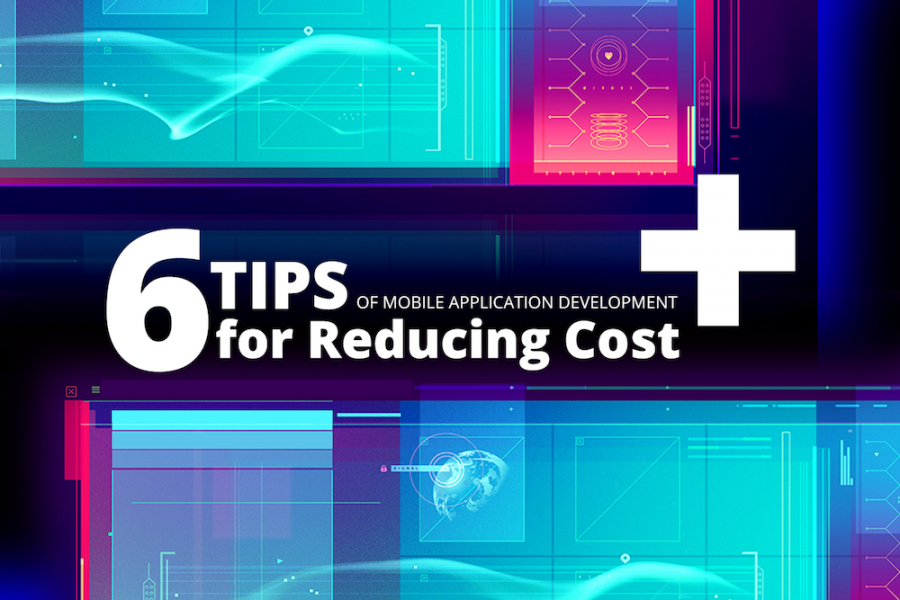
Since mobile apps first emerged almost a decade ago, a lot of businesses have tried their hand at app development.
But with the time and money that needs to be expended to achieve this, app development can feel out of reach for many small businesses.
While plenty of new technology like smart things have emerged since then, mobile apps have been growing from strength to strength with leading app stores like Apple’s App Store and Google Play both supporting over two million apps each.
When you start thinking about starting a mobile app development project, you have to start thinking about how you’re going to control costs without sacrificing efficiency and quality.
To help guide you through this process, we have come up with six tips to get you on the road to cutting the costs related to mobile app development.
1. Research and clearly document the requirements
It pays to thoroughly research and understand the needs and behavior of your target audience. When you get this part right, you will be sure to spend less time and money later on fine-tuning your app (after it’s released).
Furthermore, the number of requirements will also add to the cost of development. Once the app requirements and business goals are clearly mapped out, make sure that it’s properly documented.
Proper documentation will enable you and your team to be on the same page when it comes to the company’s primary business objective. While changes and errors during iterations can’t be avoided, documentation can also help everyone stay focused on the task at hand.
If you need help to clearly understand the requirements, you can engage business analysts and leaders within the company to guide you and provide final approval (when the proposed project perfectly meets business objectives).
2. Identify the number of platforms and devices that will be supported
Whether you’re building an app for iOS, Android, Windows, or for all of them, it will have a direct impact on costs. Additionally, the number of devices and the type of device (phone, tablet, or both?) that will be supported will also add to it.
This is because each platform comes with its own set of opportunities and challenges. For example, Android app development is usually fragmented with different devices and screen sizes (because there are several different Android smartphone brands available in the marketplace).
While native apps provide the best performance and speed, not everyone can afford to develop apps for multiple platforms. As a result, you might want to consider the option of cross-platform development.
Furthermore, as the cross-platform apps are accessed via the internet, this approach will be cheaper in the long run as updating apps can take place easily and the need to support multiple versions will be minimal.
However, cross-platform development isn’t for everyone. Rather, it’s best suited for simple apps that won’t require any hardware integration.
3. Take the expertise of the development team into consideration
It’s always best if we can get the most out of the resources that we already have. So in this scenario, you’ll have to consider the experience and skill sets of the developers in your team.
If you have to hire a developer, costs can vary depending on skills and experience. While it can be tempting to run with the cheaper option, you also have to ascertain if you will have to deal with significant complications down the road (which will add to your maintenance costs and your bottom line).
Another option is to outsource your app development project nearshore or to another continent where highly experienced software engineers can be engaged at a lower cost. The key benefit here is that you will able to get access to the best in the business regardless of the location and won’t have to deal with salaries, benefits, and overhead costs to keep them all on-premises.
4. Animations and custom designs can get expensive
Animating elements like buttons and navigation will increase your development costs. But before you start heavily customizing your app’s features, it’s important to consider the fact that both App Store And PlayStore have their own set of guidelines to get your user interface (UI) and user experience (UX) approved.
As a result, building with common and standard elements wherever possible will go along way to help control costs.
5. Embrace an iterative development cycle
To develop mobile applications cost-effectively, it’s best to stay away from the waterfall methodology. It makes much more sense to embrace an agile iterative development cycle to reduce risks and control costs.
As the development cycle is divided into small stages with a manageable set of features, you can develop each small set, test it, and deploy it through sprints. This means developing the core application idea while leaving the development of secondary features for later.
6. Find the fastest path to a minimum viable product (MVP)
When you follow an agile approach to application development, the concept of an MVP comes quite naturally. This approach will require you to quickly launch the product with core functionality.
Advanced features can be added later once you have a better understanding of the app’s demand and potential revenue. In the same vein, you should also have a plan to continuously improve the app through upgrades.
As this will be driven by UX and bugs within the system, you have to develop a plan to conduct maintenance and upgrades.
But whether you go with a native app or a hybrid one, you will have to consider the long-term business goals before committing to any development model.









